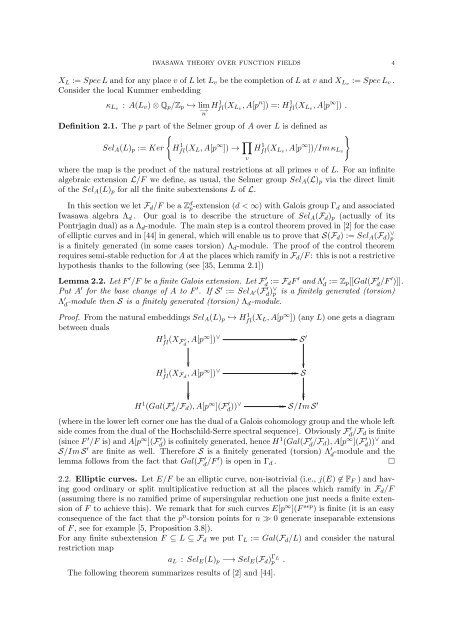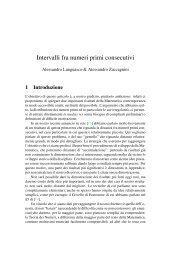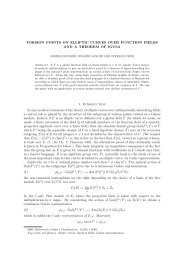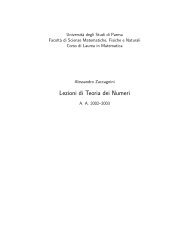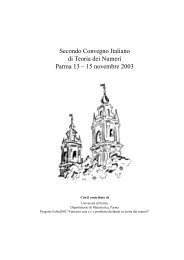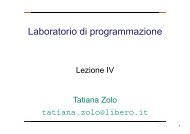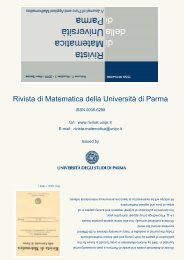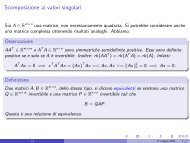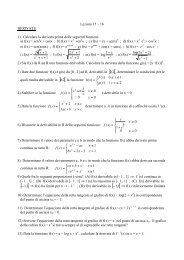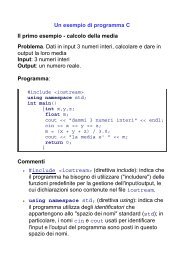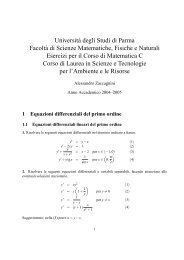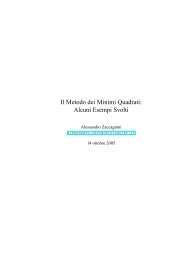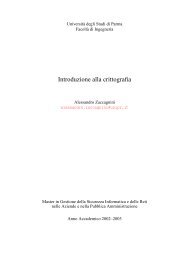ASPECTS OF IWASAWA THEORY OVER FUNCTION FIELDS 1 ...
ASPECTS OF IWASAWA THEORY OVER FUNCTION FIELDS 1 ...
ASPECTS OF IWASAWA THEORY OVER FUNCTION FIELDS 1 ...
You also want an ePaper? Increase the reach of your titles
YUMPU automatically turns print PDFs into web optimized ePapers that Google loves.
<strong>IWASAWA</strong> <strong>THEORY</strong> <strong>OVER</strong> <strong>FUNCTION</strong> <strong>FIELDS</strong> 4X L := Spec L and for any place v of L let L v be the completion of L at v and X Lv := Spec L v .Consider the local Kummer embeddingκ Lv: A(L v ) ⊗ Q p /Z p ↩→ lim−→nH 1 fl (X L v, A[p n ]) =: H 1 fl (X L v, A[p ∞ ]) .Definition 2.1. The p part of the Selmer group of A over L is defined as{Sel A (L) p := Ker Hfl 1 (X L, A[p ∞ ]) → ∏ }Hfl 1 (X L v, A[p ∞ ])/Im κ Lvvwhere the map is the product of the natural restrictions at all primes v of L. For an infinitealgebraic extension L/F we define, as usual, the Selmer group Sel A (L) p via the direct limitof the Sel A (L) p for all the finite subextensions L of L.In this section we let F d /F be a Z d p-extension (d < ∞) with Galois group Γ d and associatedIwasawa algebra Λ d . Our goal is to describe the structure of Sel A (F d ) p (actually of itsPontrjagin dual) as a Λ d -module. The main step is a control theorem proved in [2] for the caseof elliptic curves and in [44] in general, which will enable us to prove that S(F d ) := Sel A (F d ) ∨ pis a finitely generated (in some cases torsion) Λ d -module. The proof of the control theoremrequires semi-stable reduction for A at the places which ramify in F d /F : this is not a restrictivehypothesis thanks to the following (see [35, Lemma 2.1])Lemma 2.2. Let F ′ /F be a finite Galois extension. Let Fd ′ := F dF ′ and Λ ′ d := Z p[[Gal(Fd ′ /F ′ )]].Put A ′ for the base change of A to F ′ . If S ′ := Sel A ′(Fd ′ )∨ p is a finitely generated (torsion)Λ ′ d -module then S is a finitely generated (torsion) Λ d-module.Proof. From the natural embeddings Sel A (L) p ↩→ Hfl 1 (X L, A[p ∞ ]) (any L) one gets a diagrambetween dualsHfl 1 (X F d ′ , A[p∞ ]) ∨ S ′H 1 fl (X F d, A[p ∞ ]) ∨ SH 1 (Gal(F ′ d /F d), A[p ∞ ](F ′ d ))∨ S/Im S ′(where in the lower left corner one has the dual of a Galois cohomology group and the whole leftside comes from the dual of the Hochschild-Serre spectral sequence). Obviously Fd ′ /F d is finite(since F ′ /F is) and A[p ∞ ](Fd ′ ) is cofinitely generated, hence H1 (Gal(Fd ′ /F d), A[p ∞ ](Fd ′ ))∨ andS/Im S ′ are finite as well. Therefore S is a finitely generated (torsion) Λ ′ d-module and thelemma follows from the fact that Gal(Fd ′ /F ′ ) is open in Γ d .□2.2. Elliptic curves. Let E/F be an elliptic curve, non-isotrivial (i.e., j(E) ∉ F F ) and havinggood ordinary or split multiplicative reduction at all the places which ramify in F d /F(assuming there is no ramified prime of supersingular reduction one just needs a finite extensionof F to achieve this). We remark that for such curves E[p ∞ ](F sep ) is finite (it is an easyconsequence of the fact that the p n -torsion points for n ≫ 0 generate inseparable extensionsof F , see for example [5, Proposition 3.8]).For any finite subextension F ⊆ L ⊆ F d we put Γ L := Gal(F d /L) and consider the naturalrestriction mapa L : Sel E (L) p −→ Sel E (F d ) Γ Lp .The following theorem summarizes results of [2] and [44].


